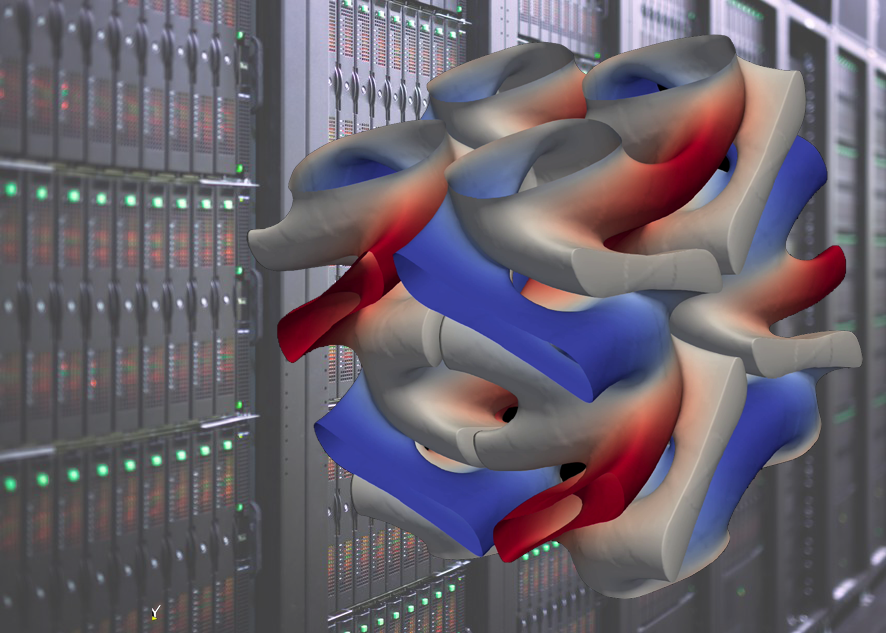
© Background image: ZIH/TU Dresden © Scientific image: Ivo Sbalzarini, MPI-CBG / CSBD
Supercomputing has become an essential tool in life science and biomedical research. High-fidelity computer simulations enable us to study realistic biological models and ask questions not otherwise possible. The speed and power of computer hardware has continuously increased over the past decades. At the same time, programming these computer systems has continuously become more difficult. The specialist knowledge required to design and write efficient supercomputing codes is found only in a small number of experts. Also, so far, developing and writing a complex simulation program typically took years and was an entire PhD project.
Researchers around Ivo Sbalzarini, Research Group Leader at the MPI-CBG and the Center for Systems Biology Dresden (CSBD), have now published a novel programming software library to address this problem. Over the past six years, the team has developed the theory, concepts, software design, and implementation of OpenFPM – the open-source framework for particle- and mesh-based simulations. In their work, now published in Computer Physics Communications, the researchers describe how OpenFPM can cover a large class of different computer codes - such as simulations, image processing, and machine learning – that can all be expressed in this framework. This way, scientific programmers can implement supercomputing codes in just a few hours, and scale them up to hundreds or thousands of processor cores. Importantly, the performance and scalability of OpenFPM-based codes is on par with and sometimes even better than hand-written codes that were developed by experts over many years. A first-year graduate student can now beat the performance of NASA codes.
Pietro Incardona, first author of the publication, says, “OpenFPM radically reduces the time we spend writing code and allows us to dedicate more time to the biological questions behind the code. It also empowers scientists with no special training in supercomputer programming to take advantage of these high-tech machines. Thus, OpenFPM can be an important step towards the routine use of supercomputing in biology.”
Sbalzarini, who is also a Professor of Computer Science at TU Dresden, adds, “We hope that OpenFPM will become the new standard in the field and that simulations will be more efficient, more scalable, use less electricity, and be more accessible to a broader scientific community. In the future, OpenFPM will also support the direct visualization of running simulations, or computational steering by hand gestures, in the Virtual Reality CAVE. We are very excited to see its future applications and impact to fundamental research.”
Pietro Incardona, Antonio Leo, Yaroslav Zaluzhnyia, Rajesh Ramaswamy, Ivo F.Sbalzarini: "OpenFPM: A scalable open framework for particle and particle-mesh codes on parallel computers". Computer Physics Communications, Volume 241, August 2019, Pages 155-177